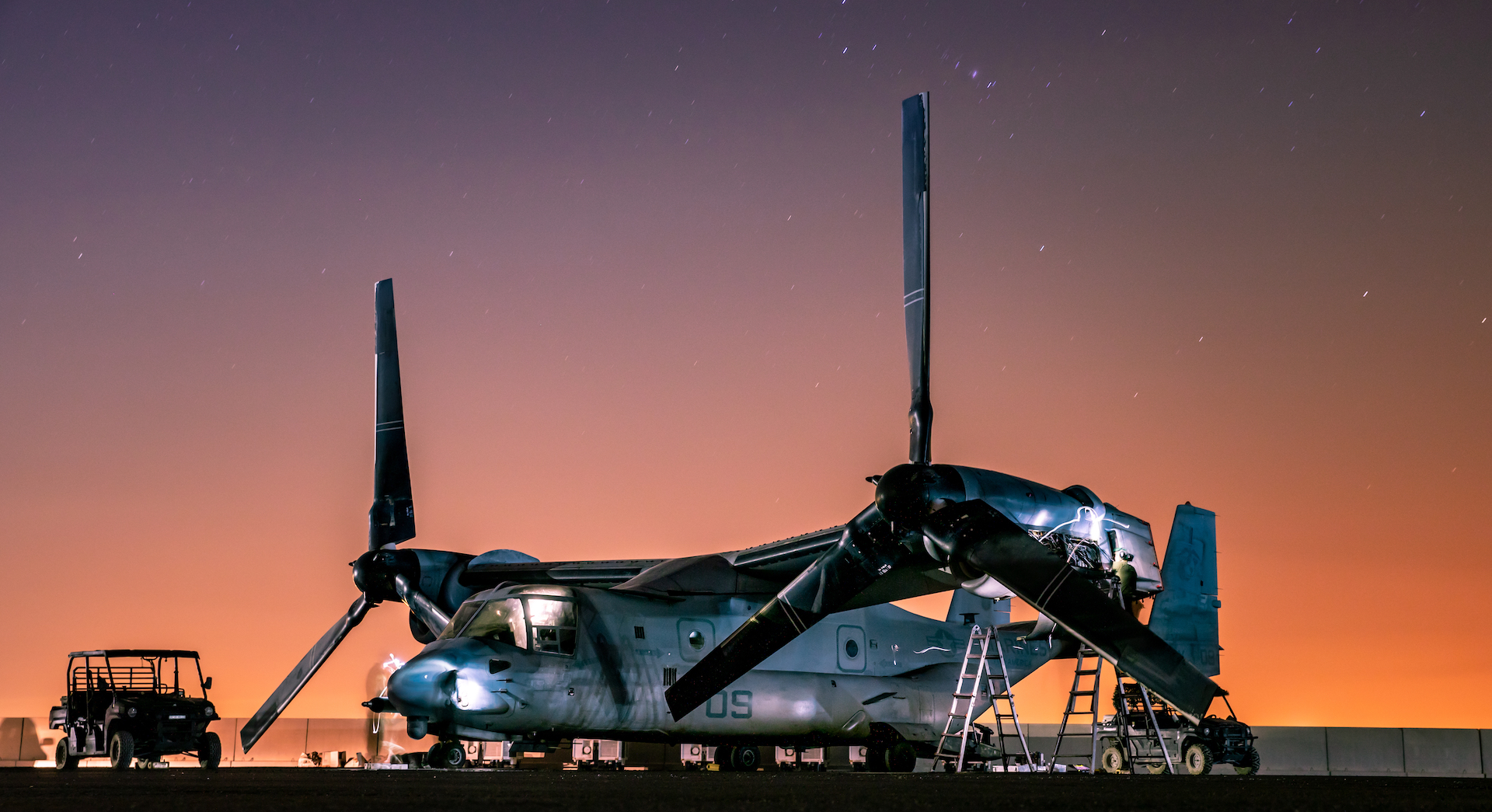

The Marine Corps and Air Force have grounded their fleets of Osprey tilt-rotor aircraft in the wake of a crash of an Air Force plane that killed eight crew members Nov. 29.
The bodies of six of the crew have been recovered from the crash off the coast of Japan. The other two aboard are presumed dead.
The crash was the third fatal mishap for the twin-rotor, vertical takeoff aircraft in just over a year, including two involving Marine Corps Ospreys.
Statements from both the Marines and the Air Force cited preliminary indications that the crash may have been caused by a “potential materiel failure.”
The Marine Corps flies close to 300 Ospreys, which it calls the MV-22, as its primary tactical troop and cargo haulers. Within the Air Force, the Osprey is exclusively flown by Air Force Special Operations Command which has just over 50 of the aircraft, which it calls the CV-22. The Navy flies a handful of the aircraft in specialized transportation roles, which are also grounded under the order.
The grounding leaves a major hole in the U.S. military’s ability to move large numbers of troops, including special operations troops, to and from battlefields. The Osprey is the primary battlefield transport for the Marines, capable of carrying close to two dozen fully-armed Marines or heavy equipment to and from hot spots. The Osprey also plays a major role in the special operations world. In recent years, Ospreys have flown Seal Team Six on a cross-continental rescue mission to recover American citizen Philip Walton who was held by a militia in Nigeria, rushed Air Force pararescuemen to rescue a mariner off the coast of Kenya, and evacuated American diplomats from Kyiv, Ukraine in the early days of the Russian invasion.
The tilt-rotor configuration allows the Osprey to land like a helicopter in tight landing spots or hover overhead during rescues or assaults on small targets like buildings. But with its engines rotated forward, it can fly with the range and speed of a traditional plane, much faster and farther than comparable helicopters.
The two services released separate announcements on the grounding.
“Lt. Gen. Tony Bauernfeind, AFSOC Commander, directed an operational standdown of the Air Force CV-22 fleet December 6, 2023, to mitigate risk while the investigation continues on the November 29, 2023, CV-22 mishap near Yakushima, Japan,” said a statement released by the Air Force. “Preliminary investigation information indicates a potential materiel failure caused the mishap, but the underlying cause of the failure is unknown at this time.”
The Marines followed suit hours later:
Out of an abundance of caution, following the AFSOC operational stand down, [Naval Air Systems Command] is instituting a grounding bulletin for all V-22 Osprey variants on Dec. 6.
Preliminary investigation information indicates a potential material failure caused the mishap, but the underlying cause of the failure is unknown at this time. While the mishap remains under investigation, we are implementing additional risk mitigation controls to ensure the safety of our service members.
The Joint Program Office continues to communicate and collaborate with all V-22 stakeholders and customers, including allied partners.
The safety of pilots and air crews is our number one priority.
The latest on Task & Purpose
- Marine Infantry veteran says enlisted shouldn’t become officers — mayhem ensues
- Father loses 80 pounds, joins Air Force alongside his 2 sons
- Opinion: Veterans won’t help the recruiting crisis until our issues are addressed
- Navy fires head of Amphibious Squadron 5 for ‘loss of confidence’
- How much do CIA case officers get paid? A look at life as a spook